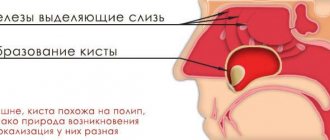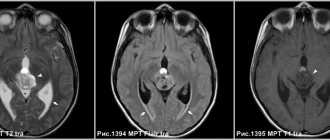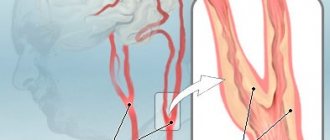- home
- general surgery
- Benign tumors and cysts of the liver - clinical picture, diagnosis, modern methods of surgical treatment
Most benign tumors (BTUs) are clinically oligosymptomatic or asymptomatic liver tumors, originating either from epithelial tissue (hepatocellular adenoma, etc.) or from stromal and vascular elements.
Spread of the disease.
Puchkov K.V., Bakov V.S., Ivanov V.V. Simultaneous laparoscopic surgical interventions in surgery and gynecology: Monograph. - M.: ID MEDPRACTIKA, 2005. - 168 p. Puchkov K.V., Ivanov V.V. and others. Technology of dosed ligating electrothermal effects at the stages of laparoscopic operations: monograph. - M.: ID MEDPRACTIKA, 2005. - 176 p.
Data on the epidemiology of DOP are very scarce. Sufficiently clear information is available only regarding the most common benign liver tumor - hemangioma. These tumors occur in 1-3% of the population, more often in women. Non-parasitic liver cysts occur in approximately 1% of the population. Other types of benign liver tumors are found much less frequently.
Classification of benign liver tumors
Benign liver tumors include hemangiomas, lymphangiomas, fibromas, lipomas and mixed tumors - hamartomas (teratomas). It is logical to classify non-parasitic cysts as benign liver tumors. Among them are true cysts (dermoid, retention cystadenomas) and polycystic liver (in more than half of the patients it is combined with cystic changes in other organs - kidneys, pancreas, ovaries). False cysts (traumatic, inflammatory) are also often observed. True cysts are usually solitary; false ones can be either single or multiple. The volume of multiple cysts is usually several milliliters, while the volume of solitary (true and false) cysts can reach 1000 ml or more.
Diagnosis of benign liver tumors
Two important signs are common to DOP: 1) the absence of an increase in the concentrations of alpha-fetoprotein, carcinoembryonic antigen CA - 199 in blood serum; 2) the absence of a clear increase in the activity of aspartic and alanine aminotransferases (AST and ALT), alkaline phosphatase (ALP), gamma-glutamyltransferase (GGTP) and lactate dehydrogenase (LDH).
These signs are reliable only in the absence of chronic or acute diffuse liver diseases, which themselves can cause changes in the above tests. Significant assistance is provided by the use of ultrasound and CT (or NMR) with bolus contrast, which have high resolution.
Liver cyst
Differential diagnosis of DOP usually begins with the exclusion of cysts. Non-parasitic cysts are more common. The possibility of polycystic disease, as well as solitary and multiple true and false liver cysts is taken into account.
Most cysts are small (1-5 cm in diameter) and are more common in women. A significant part of them are asymptomatic. A number of patients experience pain in the right hypochondrium, some have constant pain, others have periodic pain. Significant assistance is provided by the use of ultrasound and CT (or NMR), which have high resolution. The possibility of polycystic liver disease must be considered.
Differential diagnosis of simple cysts is also carried out with parasitic liver cysts (echinococcosis). The latter are supported by positive reactions with echinococcal antigen and Katsoni, as well as the detection of calcifications in the area of tumor-like formation, although hemengiomas can occasionally become calcified.
For a free written consultation, in order to determine the type of liver cyst, its localization to the main structures of the organ and indications for surgery, as well as choosing the correct surgical treatment tactics, you must send me a complete description of the abdominal ultrasound, MSCT data of the liver with contrast, and analysis to my personal email address blood for echinococcus, indicate age and main complaints. Then I will be able to give a more accurate answer to your situation.
Liver cyst treatment
Some non-parasitic liver cysts are also subject to surgical treatment, due to the real possibility of their rupture, infection and hemorrhage into the lumen of the cyst. In addition, rapidly growing large cysts lead to impaired liver function due to atrophy and replacement of the liver parenchyma with a cystic formation. Among the operations, liver resection, pericystectomy and cyst enucleation are the most commonly used.
In recent years, transparietal punctures of cysts under ultrasound or CT control have become widespread. After aspiration of the contents, a 96*ethyl alcohol solution is injected into the lumen of the cyst to harden the inner lining of the cyst. This operation is effective for cysts up to 5 cm in size. If there is no effect from these treatment methods or the cyst is larger, an operation is indicated - laparoscopic excision of the cyst area, followed by de-epithelialization of the inner lining of the cyst with argon-enhanced plasma or a defocused laser beam. Similar tactics are used for polycystic liver disease. In case of complicated polycystic liver disease (suppuration, bleeding, malignancy, compression of the bile ducts, portal or vena cava by large cysts), surgical treatment is indicated. Typically, fenestration is performed (opening cysts protruding above the surface of the liver), followed by deepithelialization of the inner lining of the cyst.
Watch a video of operations for liver cysts performed by Professor K.V. Puchkov. You can visit the website “Video of operations of the best surgeons in the world.”
Hepatocellular adenoma
Clinically, this is an asymptomatic benign liver tumor, which has signs of an adenoma developing from hepatocytes and is often delimited by a capsule. It most often affects women, usually due to long-term use of estrogen-progestational contraceptives. Occurs less frequently with long-term use of anabolic steroids. Adenoma develops quite rarely: in 3-4 people per 100,000 who use contraceptives for a long time.
As a rule (90%), it is single. It is found more often in the right lobe, subcapsularly. If located in the anteroinferior regions, it is palpated as a smooth, loose formation. Adenomas that developed while taking anabolic steroids have a more “aggressive” course. Complications such as intraperitoneal bleeding are rarely observed. Very rarely, an adenoma degenerates into a malignant tumor.
Focal nodular hyperplasia
Clinically, this is an oligosymptomatic benign tumor that does not have a capsule. The central part of the tumor is represented by scar connective tissue, and the peripheral part is represented by nodularly transformed hepatocellular tissue. Most often located subcapsularly. Foci of necrosis and hemorrhage are often observed in the tumor. As a rule, it does not develop in a cirrhotic liver, so it is sometimes called “focal cirrhosis.” Usually happens solitary. This is a rare benign liver tumor observed primarily in women taking oral contraceptives.
Nodular regenerative hyperplasia
This tumor resembles focal nodular hyperplasia of the liver, and is sometimes combined with it. In contrast to the latter, elements of connective tissue are significantly less represented. May be considered a prestage of hepatocellular carcinoma. Sometimes, as the cellular elements of this tumor grow, compression of large bile ducts or large branches of the portal vein occurs. As a rule, it is not detected in a cirrhotic liver. Sometimes it develops against the background of malignant diseases of extrahepatic localization (myeloproliferative processes, sarcomas, etc.).
All these types of DOP are asymptomatic diseases; in most cases, their detection can be attributed to accidental findings. The liver in most of these patients is not enlarged.
Radionuclide scintigraphy usually reveals a focal process measuring 3-5 cm. If the tumor is located in the marginal zones of the liver, then formations of smaller sizes may be detected.
Similar data are obtained with ultrasound and CT, as well as with the help of selective angiography and nuclear magnetic resonance (NMR). Therefore, a significant portion of small tumors are visible. Only morphological methods can clarify the nature of these three types of tumors. The material for these studies is usually obtained using a puncture biopsy with Shiba needles under ultrasound or CT control.
Patients with hepatocillary adenoma, focal nodular hyperplasia and nodular regenerative hyperplasia of the liver do not require drug treatment. Surgical treatment is used infrequently. Indications for it are either compression of the bile ducts or blood vessels, or the appearance of pain. The operation is performed if any complication develops and the tumor grows rapidly.
Secondary prevention methods and surveillance systems are as follows. It is prohibited to take oral contraceptives, estrogens, and anabolic steroids. Work related to the production of vinyl chloride is not recommended. Taking phenobarbital and zyxorine is undesirable. Abstinence from alcohol is recommended.
When a tumor is first detected, examinations are carried out 3-6-9-12 months and then once a year. In addition to the usual examination with determination of liver size according to Kurlov, studies of bilirubin content, aminotransferase activity, alkaline phosphatase, GGTP, alpha-fetoprotein, carcinoembryonic antigen and CA 19-9 antigen are performed. An ultrasound of the liver is also performed.
Hemangioma
Clinically, it is an asymptomatic benign tumor originating from the vascular, mainly venous, elements of the liver. Refers to the most common type of DOP.
It is represented by two options: cavernoma, which is like dilated blood vessels, and true hemangioma, developing from vascular embryonic tissue. It is most often located subcapsularly, in the right lobe, and often has a pedicle. Often covered by a fibrous capsule that may become calcified.
Spontaneous ruptures are very rare, but life-threatening. Clear clinical manifestations are observed in only 5-10% of tumors. As a rule, in these cases the tumor diameter exceeds 5 cm.
In many cases, the detection of hemangioma, like other DOPs, is an incidental finding. With large sizes and corresponding localization, symptoms of compression of the biliary tract or, less commonly, symptoms of portal hypertension sometimes appear. Sometimes a patient consults a doctor due to pain in the upper abdomen.
Instrumental studies provide important information. Radionuclide scintigraphy of the liver is performed, as usual, if a space-occupying process in the liver is suspected in two projections. Thanks to this method, as a rule, it is possible to detect a tumor with a diameter of 4-5 cm. For hemangiomas with a diameter of 4-5 cm or more, the tumor is detected in 70-80% of those examined. Ultrasound in the presence of hemangioma reveals a hyperechoic, well-defined formation. NMR provides similar information. Often, especially in the less massive left lobe, the vascular pedicle is clearly visible. Hemangiomas with a diameter of 3-5 cm or more are detected by ultrasound in 70-80% of those examined. Sometimes areas of calcification are observed in hemangiomas.
CT allows you to obtain data close to the results of ultrasound, although it often brings significant additional diagnostic information. This additional information primarily concerns the condition of surrounding tissues and organs. Celiacography allows you to obtain the most accurate data when recognizing hemangiomas. Usually, hypervascularized areas with clear boundaries are clearly visible, making it possible to detect a hemangioma with a diameter of 2-3 cm or more in 80-85% of those examined.
Indirect radionuclide angiography, performed using a gamma camera, brings similar, but less accurate results compared to celiacography. NMR often provides significant information.
When making a diagnosis of hemangioma, malignant liver tumors are excluded. In recent years, a kind of focal fatty degeneration of the liver has increasingly become the object of differential diagnosis, especially in cases where rounded areas of the intact liver are found against the background of focal fatty degeneration. These areas have a different density from fatty degeneration, and this difference is quite clearly recorded with ultrasound and CT. These pseudotumor formations are usually not visible on radionuclide scintigraphy of the liver. However, this differential diagnostic sign is not very reliable. A targeted liver biopsy plays a decisive role in identifying focal fatty degenerations.
Treatment of liver hemangiomas. With small hemangiomas without a tendency to grow, patients, as a rule, do not need medical and surgical treatment. For large tumors that compress the bile ducts or blood vessels, there are indications for resection of the corresponding liver segments. More often this rule applies to hemangiomas with a diameter of more than 5 cm.
Liver lymphangiomas are extremely rare; their clinical picture makes them difficult to distinguish from hemangiomas. Suspicion of lymphangioma arises only if there is an extrahepatic location of the tumor in the mediastinum and neck.
Fibromas, myxomas, lipomas, liver neuromas, which have the features of benign tumors: slow development, clear boundaries, normal ESR, are extremely rare. Absence of tumor markers and increased activity of serum enzymes such as AST, ALT, ALP, GGTP, LDH.
The treatment strategy is similar to that for hemangiomas.
Secondary prevention methods and surveillance systems are essentially the same as for the benign tumors described above. For all types of DOP, medications such as oral contraceptives and anabolic steroids are prohibited. It is undesirable to take drugs such as phenobarbital and zyxorin. Work related to the production of vinyl chloride is not recommended.
All patients with DOP require constant medical supervision. When a tumor is detected for the first time, examinations are carried out after 3-6-9-12 months and then once a year. In addition to the usual examination with determination of the size of the liver according to Kurlov, studies of bilirubin content are performed, determining the activity of ALT, AST, ALP, GGTP, GDH and LDH, alpha-fetoprotein and carcinoembryonic antigen.
Hepatocellular carcinoma (HCC)
HCC is a malignant tumor that develops from hepatocytes. Refers to primary liver carcinomas. In 60-80% of patients, it is associated with the persistence of hepatitis B and C viruses; in 70-85% of patients in developed countries, HCC develops against the background of liver cirrhosis. Around the world, approximately 750,000 people die from HCC each year.
Basically, morphological classifications of HCC have been proposed. The most common division of HCC is into nodular, massive and diffuse forms. The TNM system is also used. We have developed a classification (1988), which includes the main clinical variants of the disease: hepatomegalic (covers about 50% of patients), cystic (3-5%), cirrhosis-like (about 25%), hepatonecrotic, or abscess-like (6-10%), ictero-obstructive ( 6-10%), masked(6-10%).
Some researchers value ultrasound data more highly. A. Maringhini et al. (1988) when examining 124 patients with HCC, found hyperechoic areas in 47 of them, hypoechoic areas in 30, and mixed areas in 47. The sensitivity of ultrasound, according to the authors, was 90%, specificity - 93.3%.
As reported by JC Ellis (1988), tumors with a diameter of less than 2 cm are difficult to distinguish from hemangiomas, solitary regenerative nodules and adenomas. Diagnosis of tumors located directly under the diaphragm, in the superolateral part of the right lobe, is especially difficult.
CT gives approximately the same results as ultrasound, sometimes slightly higher. However, identifying small tumors (2-4 cm in diameter), especially against the background of cirrhosis, is very difficult. JM Henderson et al. (1988) during a CT examination of 15 out of 100 patients with liver cirrhosis revealed focal anomalies suspicious for HCC.
Treatment of hepatocellular carcinoma.
In all cases where possible, surgical treatment of tumors is performed. Most often, resection is feasible for tumors of the left lobe. Long-term results of surgical treatment are not encouraging. In this regard, control examinations of patients after resections are recommended every 3 months.
A relatively small proportion of patients undergo liver transplantation. It is performed in persons under 60 years of age, in the absence of metastases and severe extrahepatic diseases. Long-term results are unfavorable.
If surgical treatment is not possible, some patients undergo chemotherapy.
Metastatic liver carcinoma (MLC)
The primary focus of MCP is located outside the liver - in the lung, stomach, colon and other organs. Refers to secondary liver tumors.
The frequency of metastasis of tumors of different primary localizations to the liver is different.
Tumors of the gallbladder metastasize to the liver in 75% of cases, pancreas - in 70%, colon, breast, ovaries, and melanoblastoma - in 50%, stomach and lungs - in 40%. However, primary tumors themselves occur with varying frequencies. Therefore, the doctor most often observes metastases in the liver coming from the colon, stomach and lungs, and in women - also from the mammary gland and ovaries.
To confirm or exclude the metastatic nature of a malignant liver tumor, a thorough examination of a number of organs is carried out. For some localizations this is especially important.
The examination plan includes:
- blood serum test (ACE, carcinoembryonic antigen, CA antigen - 199, acid phosphatase);
- chest x-ray;
- gastroscopy;
- colonoscopy or sigmoidoscopy in combination with irrigoscopy;
- Ultrasound of the pancreas, kidneys, ovaries, prostate;
- breast examination and mammography in women;
- consultation with a gynecologist and urologist.
Particular attention is paid to the possibility of primary localization of the tumor in the colon, prostate gland (in men) and ovaries (in women), since metastases of these localizations seem to be relatively curable in some patients.
General information
Pathological enlargement of the liver in medicine is called hepatomegaly .
This condition develops in many liver diseases, as well as in diseases of other organs and systems, chronic infections, parasite infection, tumor infiltration, etc. In liver diseases, this symptom is most often observed. In some cases, the liver can reach very large sizes and weigh more than 10 kg. However, when talking about what hepatomegaly is, it should be taken into account that an enlarged liver may indicate many pathological processes. Accordingly, the diagnosis of hepatomegaly means that the doctor must determine the underlying causes of this condition and provide adequate treatment. ICD diseases - K76 (other liver diseases). Why a person develops hepatomegaly, how this condition is treated, and what to do to prevent it will be discussed in this article.
Complications
The main complications: gastrointestinal bleeding, ascites and hepatic encephalopathy (liver failure, a complex of mental, nervous and muscle disorders).
Splenomegaly often causes anemia, low white blood cell counts, and low platelet counts.
Common complications associated with portal hypertension are aspiration pneumonia, sepsis, renal failure, cardiomyopathy, arrhythmias, and hypotension.
Portal hypertension is a dangerous disease because it can cause bleeding. In many cases, bleeding episodes are considered medical emergencies because the mortality rate from variceal bleeding is about 50%. Esophageal varices are very common in people with advanced cirrhosis, and it is estimated that one in three people with varices will develop bleeding.
Pathogenesis
Speaking about the pathogenesis of this condition, experts consider several possible options for its development. In this case, either a true enlargement of the liver may occur due to damage to the vascular bed, a neoplastic or infectious process, or other changes - intoxication, degenerative, traumatic, endocrine, autoimmune. Changes can also occur at the anatomical level.
With the development of pathological processes, the liver increases in size and its structure becomes denser. In hepatosis, the process is caused by dystrophic changes in the liver cells, in acute hepatitis - by lymphomacrophage infiltration. If cirrhosis , nodes form in the liver and fibrosis occurs. If the veins of the liver are affected or heart failure , the enlargement of the organ is associated with blood stagnation. With tumors and abscesses focal changes occur.
What kills a patient with untreated fatty liver: heart attack or cirrhosis?
Fatty liver disease, as fatty liver is also called, is combined with the deposition of fat on the walls of the arteries, and, as a result, accelerates the development of cardiovascular accidents. If fatty liver disease is not treated, it turns into fibrosis, when connective tissue, in other words, a scar, is formed instead of the “workhorses” - liver cells. This is how cirrhosis gradually develops. And these are the consequences of loving sweets, fatty foods, strict diets, “relaxing” with a glass of beer in hand or something stronger.
But the liver is an amazing organ, and the process can be reversed if we start paying attention to ourselves in time.
Classification
When making a diagnosis, the condition is classified from an anatomical and morphological point of view. The following types of damage are distinguished:
- bile ducts;
- parenchyma;
- connective tissue;
- vascular network.
In addition, during the diagnostic process it is noted whether hepatomegaly is combined with jaundice , enlarged spleen or ascites .
Hepatosplenomegaly is an enlargement of the liver and spleen. This condition can occur in a number of diseases and conditions. These are liver diseases, infectious and parasitic diseases, metabolic diseases, etc. Since an enlarged liver and spleen is a typical manifestation of many diseases, it is very important to promptly identify this condition and conduct additional examinations.
Taking into account the degree of liver enlargement, the following types of hepatomegaly are distinguished:
- Moderate – the size and structure are slightly changed. Moderate hepatomegaly is the easiest to treat.
- Pronounced - the organ is enlarged by 10 cm relative to the norm.
- Diffuse – an increase of more than 10 cm.
Partial hepatomegaly is distinguished separately, which is characterized by an uneven increase - the process affects only a part or one lobe.
Depending on the reasons for the development of such a pathological process, the following forms are distinguished:
- Drug injury – develops as a side effect when using certain medications.
- Toxic damage - occurs as a result of the influence of toxins - household (polluted air), natural (consumption of poisonous mushrooms), industrial (work in hazardous enterprises).
- Alcoholism is a very common form. fatty liver , alcoholic hepatitis , fibrosis , and cirrhosis can develop .
- Viral infection - occurs due to infection with hepatitis B and C.
- Infectious lesions - characteristic of mononucleosis , hepatitis A.
- Immune damage is a consequence of malfunctions in the immune system, when antibodies “erroneously” act on the liver.
- Cancerous lesion is a consequence of oncological processes. It can develop with ineffective treatment of hepatitis and cirrhosis .
- Dystrophic damage is a consequence of changes in the volume of liver cells and the accumulation of fat in them. This type of injury is called hepatic coma and can be fatal.
When does fat accumulate in the liver, and you don’t know? Unobvious risk factors
Few people go to the doctor feeling healthy. Many people don't go, even if they have symptoms. Therefore, fatty liver disease is most often detected by chance, during examination for other diseases.
Who should be careful? Those at risk for fatty liver disease are those who:
- They adhere to strict diets or have lost weight suddenly and quickly . The patient loses weight, enjoying achievements and reflection in the mirror, and the liver accumulates fat.
- They eat food high in fast carbohydrates and unhealthy fats - and the body needs more insulin, the pancreas produces it in excess, and insulin increases the accumulation of fat in the liver.
- They suffer from type 2 diabetes - again, due to the fact that there is a lot of insulin in this disease, it causes the liver to accumulate fat. And other hormonal disorders, for example, a lack of thyroid hormones, also affect the liver.
- They take medications for other reasons - for example, many contraceptives cause fatty liver. The “black list” includes some antibiotics, arrhythmia drugs, antitumor drugs and many other drugs.
From fatty liver to diabetes - one step
And yet, the “champions” in terms of liver risk are those who are obese. In this condition, more free fatty acids enter the liver and are stored in the liver cells as fat. Cells lose sensitivity to insulin, which becomes more and more abundant, a breakdown occurs, and diabetes develops.
Do you like to relax with a glass of alcohol? Fatty liver on the horizon
Alcohol is metabolized into fat, which is stored by liver cells. Then the cells become overfilled with fat, do not receive proper nutrition and die. This is also the cause of cirrhosis in those who “use.”
Causes of liver enlargement
Liver enlargement can be caused by various reasons. In adults and children, this organ may enlarge due to the influence of one or more factors.
Most often, the causes of enlargement of the left lobe of the liver or the right lobe are associated with the following diseases and conditions:
- Neoplastic processes - the development of tumors, mainly metastatic, as well as hemangiomas or adenomas .
- Disturbances in the vascular bed - the hepatic and portal veins can be affected due to the formation of a blood clot. Also, such disorders may be a consequence of pathology of the hepatic artery, Budd-Chiari syndrome .
- Degenerative lesions - non-alcoholic steatohepatitis , steatohepatosis .
- The influence of substances toxic to the liver - alcohol abuse, taking medications.
- Infectious viral processes - infectious mononucleosis , viral hepatitis , nonspecific cholangitis , etc.
- Autoimmune diseases.
- Amyloidosis.
- Endocrine disorders.
- Congenital pathologies.
- Injuries.
In addition, experts identify some factors that increase the likelihood of developing hepatomegaly:
- Regular alcohol abuse.
- Long-term use of high doses of medications, vitamins, biological additives.
- Excess weight , unhealthy and irrational nutrition.
Treatment of portal hypertension at the Innovative Vascular Center
In the Innovative Vascular Center, both classical operations to create splenorenal anastomoses and emergency endovascular operations of transjagular portacaval shunting (TIPS) are used to treat portal hypertension.
Endovascular operations are performed on an angiographic complex with the additional use of visualization of the portal vein using ultrasound navigation. Such interventions are performed under local anesthesia with intravenous sedation.
Splenorenal anastomosis operations are performed in intact patients who have suffered bleeding from varicose veins of the esophagus. We perform such interventions under anesthesia through an access in the left side wall of the abdomen with transition to the chest. Such interventions help to avoid the deadly complications of portal hypertension.
Symptoms of liver enlargement
Signs of hepatomegaly are associated primarily with true enlargement of the liver. It is diagnosed if the size of the organ along the right midclavicular line is more than 12 cm, or its left lobe is palpated in the epigastric region. In normal condition, the liver is soft and can be easily felt under the ribs.
It is also important to take into account the fact that there are no nerve endings in the liver, so even with the development of pathological processes, symptoms may not appear. Often, in the initial stages, adults periodically experience only minor discomfort or pain at the location of the organ. Only during an ultrasound examination can characteristic echo signs be determined.
Symptoms of liver enlargement
Consequently, signs of liver enlargement in adults, and sometimes in children, are often diagnosed already in the later stages, when the pathological process is already actively developing. Then a more pronounced clinical picture is observed. If the liver is enlarged by 2 cm or more, the following signs may be observed as the pathological process develops:
- Discomfortable sensations in the area of the right hypochondrium. They may worsen after eating and physical exertion.
- A feeling of heaviness after consuming a small amount of water or food.
- Periodic heartburn .
- Belching with an unpleasant odor.
- Disorders of the digestive system - constipation , diarrhea , nausea, periodic vomiting. Possible vomiting of bile.
- Discolored stool that may contain particles of undigested food.
- Yellowness of the skin and mucous membranes, yellowness of the sclera of the eyes. The skin may also take on a sallow tone.
- Itchy skin.
- Sudden mood swings, irritability.
- Drowsiness or insomnia .
- Tachycardia.
- Heavy sweating.
- High blood pressure .
- Pain in the chest area, feeling of tightness.
- When palpating the liver at a doctor's appointment, a person may feel pain.
How can we help you?
Examine . Ultrasound and elastography will show how much the liver tissue has changed, whether there is fibrosis, and the analyzes will make it clear whether there are disorders of fat and carbohydrate metabolism. If ultrasound results reveal fatty liver, the hepatologist will recommend testing for viral hepatitis. Viral hepatitis often occurs under the guise of fatty liver.
The liver does not hurt, fat accumulates unnoticed. Think about it before it's too late. Get examined and make sure everything is ok. And if a problem exists, do not close your eyes to it and seek help. We are ready to help.
Tests and diagnostics
To determine the presence of hepatomegaly and the causes of such manifestations, the examination is carried out according to the following scheme:
- The doctor conducts a detailed survey of the patient about complaints and examines the medical history.
- Next, palpation is performed to determine the size, boundaries and density of the liver.
- It is important to determine the results of a general and biochemical blood test. Using the data obtained, it is possible to determine the presence of infectious and inflammatory processes and assess the level of liver enzymes . A general urine test is also performed.
- Markers of viral hepatitis are determined.
- An ultrasound of the liver is performed. This is a fairly informative method that allows you to determine the condition of the liver, portal vein, and hepatic artery.
- Informative studies are CT and MRI.
- If necessary, the doctor prescribes a laparoscopic examination.
- According to indications, a puncture is performed and material is taken for a biopsy .
In the normal state of the organ, its length is 14-20 cm, its cross-sectional size is 20-22.5 cm, in the sagittal plane - 9-12 cm. The length of the right lobe is 11-15 cm, the thickness of the left lobe is approximately 6 cm, and its height is less than 10 cm. Deviations can be no more than 1.5 cm.
Hepatomegaly is diagnosed if the size of the organ exceeds 12 cm or an increase in the left lobe of the liver is noted (in this case it is palpated in the epigastric region). During the diagnostic process, liver prolapse and the location of other tissues in the right upper quadrant (this could be tumors, an enlarged gallbladder) are also excluded.
Methods for diagnosing pathology
The presence of a large list of reasons that contribute to an increase in liver size complicates diagnostic measures aimed at identifying the underlying disease that caused the pathology.
Differential diagnosis occupies a special place in the list of diagnostic measures. To identify the underlying disease, it is necessary to use a whole range of methods.
This complex includes laboratory tests and instrumental diagnostic methods.
To determine the underlying pathology that provoked the appearance of hepatomegaly, the following studies are used:
- general blood and urine tests;
- blood chemistry;
- blood and urine testing for sugar;
- checking liver functions using biochemical tests for basic enzymes.
The following are used as instrumental, more accurate and objective ways to identify the underlying disease:
- Ultrasonography.
- Computed and magnetic resonance tomography.
- Radiography.
- Scanning using hepatotropic radioactive compounds.
The latter method allows you to determine the amount of affected tissue and the amount of tissue that has not lost its functionality.
Modern methods make it possible not only to determine the degree of organ enlargement, but also to identify changes in the structure of the tissue, as well as determine the nature of pathological disorders - focal or diffuse.
If necessary, a biopsy procedure can be used to allow histological examination. This method has a significant drawback in that it is very painful for the patient.
It is prescribed only in cases where the use of other diagnostic technologies does not allow obtaining a complete picture of the condition of the gland.
Types of hepatomegaly according to ultrasound findings
The most common method for diagnosing hepatomegaly is the use of ultrasound. This method makes it possible to determine the echostructure of tissue by the reflection of ultrasound.
The disorder is considered unexpressed if the size of the liver deviates from normal by only 1-2 centimeters. Usually such a deviation is detected by chance, this is due to the fact that with such a violation no symptoms arise. In very rare cases, the patient may complain of slight weakness, heartburn, unpleasant odor from the mouth and abnormal stool.
A moderate type of hepatomegaly is stated in cases where, along with an increase in the volume of the organ, the appearance of small diffuse changes in the parenchyma is observed.
Most often, this type of pathological process occurs with alcohol abuse and an unbalanced diet.
A severe form of the disorder is considered to be a disease in which there is a significant enlargement of the liver. At the same time, the patient exhibits dysfunction of most organs adjacent to the gland. In the presence of this variety, a change in the structure of the tissue is recorded with the appearance of dense foci in it.
D
Quite often, the changes that occur with hepatomegaly are reversible, which makes it possible to restore the functioning of the liver to almost full extent.
Treatment with folk remedies
For hepatomegaly, any folk remedies should be used very carefully and in no case should they replace the main treatment. Before using any traditional method, you should consult your doctor about the advisability of its use. In addition, traditional methods also have certain contraindications.
- Milk thistle tea . This medicinal plant protects liver cells and promotes the regeneration of new ones. Also acts as an anti-inflammatory agent. The main active component of the plant is silymarin, which is part of a number of hepatoprotective drugs. To prepare milk thistle tea, you need 1 tsp. Pour 200 ml of boiling water over the seeds of the plant. After half an hour, strain and drink warm in two doses.
- Infusion of immortelle . The inflorescences of this plant contain a lot of flavonoids that have hepatoprotective activity. The use of products with immortelle helps restore the detoxification function of the liver. To prepare an infusion of immortelle, add 10 g of flowers to 250 ml of water and heat the container in a water bath for half an hour. After 10 minutes, strain and squeeze. Add water so that the total amount of product is 250 ml. Drink in 4 doses throughout the day.
- Rose hip decoction . Rose hips also contain many flavonoids. Rosehip helps eliminate spasms of the bile ducts, has a beneficial effect on the digestion process, and produces an anti-inflammatory effect. To prepare a decoction, add 200 g of berries to 1 liter of water, bring to a boil and cook for 15 minutes. Strain, drink 150 ml 4 times a day.
- Collection of herbs . This collection may include oregano, nettle, chamomile, calendula, centaury. Herbs should be mixed in equal proportions and an infusion should be prepared by pouring 2 tsp. mixture 250 ml water.
- Beetroot, pumpkin . These vegetables should be included in the menu more often, preparing a variety of dishes from them. Raw pumpkin is beneficial, as is freshly squeezed beet juice.
Prevention
The essence of prevention is to prevent diseases that lead to liver enlargement. To do this, it is important to follow the following recommendations:
- Eat right and do not abuse unhealthy foods, control your intake of carbohydrates and fats.
- Get rid of bad habits.
- Avoid uncontrolled use of medications, carrying out drug treatment only as prescribed by a doctor.
- Follow all hygiene rules to avoid parasitic or viral infection.
- Those who have suffered from liver disease should undergo regular preventive examinations with a doctor.
- Practice regular physical activity, but it should not be excessive.
What cases from practice related to liver disease do you remember?
— Severe liver damage occurs with viral hepatitis, when a person for a long time did not know that he had a virus, for example, hepatitis C. This hepatitis can be asymptomatic for many years, ultimately leading to cirrhosis of the liver.
That is, a person lived a normal life and suddenly he began to develop symptoms of cirrhosis. Upon further examination, it turned out that the patient’s liver functions were impaired, the disease was already at a serious stage, and the person was on his way to the operating table for a transplant. We have to fight such cirrhosis, and we are talking about survival, not about cure.
In children
Hepatomegaly in a child may be associated with neonatal jaundice. In a small child, it develops due to birth injuries, as well as dysfunction of the mother’s endocrine system. As a rule, liver enlargement in newborns does not require treatment and goes away within a month.
Minor hepatomegaly, which is determined by palpation or ultrasound in a child under 7 years of age, is also considered a physiological phenomenon. It is normal if the liver protrudes beyond the edges of the ribs by 1-2 cm. The condition, as a rule, normalizes as the child grows. However, if an increase in the right lobe of the liver or its left lobe is detected, it is better to undergo additional studies to exclude the development of diseases.
An enlargement of the left or right lobe of the liver in children may be associated with the following diseases and conditions:
- inflammatory processes;
- toxic damage;
- congenital TORCH infections;
- dysfunction of the biliary tract;
- metabolic disorders;
- tumors, metastases.
A particular cause for concern is the situation when hepatomegaly in children is combined with other alarming symptoms: fever, vomiting, rashes, weight loss, poor appetite, yellowness of the skin and mucous membranes. In this case, you should immediately consult your doctor.
Diet
Diet for an enlarged liver (hepatomegaly)
- Efficacy: no data
- Timing: constantly
- Cost of products: 1400-1500 rubles. in Week
Diet is one of the important components of complex treatment of this condition. If the increase is insignificant, sometimes only nutritional correction can normalize the condition of the organ.
First of all, it is important to limit the amount of salt to 6-7 g per day and the amount of sugar to 50 g per day. You should drink up to 2 liters of water daily. You need to eat fractionally - up to 6 times a day in small portions.
For hepatomegaly, it is recommended to include the following foods and dishes in the diet:
- Low-fat dairy products.
- Vegetables – fresh, as well as stewed, baked and boiled.
- Lean meat, fish.
- Vegetable soups.
- Vegetable oils.
- Fruits.
- Marmalade, dried fruits, honey, biscuits.
- Cereals.
- Egg white.
The following foods should be excluded from your diet:
- Spicy, fried, salty dishes.
- Smoked meats and canned goods.
- Fatty meat and fish.
- Mushrooms.
- Egg yolk.
- Legumes.
- Sorrel, spinach, radish, onion.
- Fatty dairy products.
- Muffins, baked goods, cocoa, nuts.
- Alcohol.
- Soda, coffee, sour juices.







